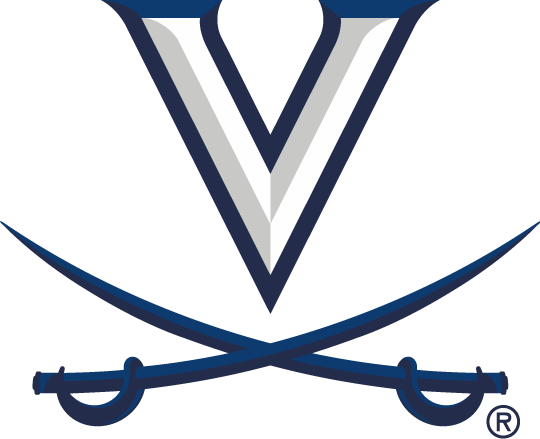Mary Slaughter: A Woman Ahead of Her Time at UVA
by Jeff White (jwhite@virginia.edu)
CHARLOTTESVILLE –– Her father taught at the University of Virginia, and she grew up
near Grounds on Edgewood Lane, not far from Rugby Road. There were Wahoos everywhere she looked, and
UVA was an appealing option for Mary Slaughter after she graduated from Lane High School in 1952.
Never mind that the University would not admit its first class of undergraduate women until 1970.
“Because I was the daughter of a professor, I was able to go to the University of Virginia,”
Slaughter recalled. “I lived at home. It was just like high school.”
She wasn’t always the only woman in her classes. “Other professors had daughters who went to the
University,” Slaughter said.
In another regard, though, she stood alone. Before enrolling at UVA, Slaughter had established
herself as an elite tennis players on the junior circuit, and her father, Edward “Butch” Slaughter,
saw no reason she shouldn’t continue playing in college, even if there were no varsity teams for
women. Neither did Carl “Red” Rohmann, coach of UVA’s tennis team and one of Butch Slaughter’s good
friends.
“The two of them, I think, figured out this scheme,” said Mary Slaughter, who in high school had
practiced with Rohmann at the Lady Astor tennis courts near UVA’s Memorial Gymnasium. (Lane High did
not have varsity teams for girls then.)
In 1952-53, Slaughter played against and alongside men on the UVA freshman tennis team, whose members
were awarded numerals, not letters. In 1953-54, she became the first woman to play a varsity sport
at UVA––and the first to earn a varsity letter. Her letterwinner’s sweater is on display at the
Boar’s Head Sports Club.
After her second year at UVA, she transferred to UNC Greensboro––then known as Woman’s College of the University of North Carolina––from
which she graduated in 1956 with a degree in physical education. After the 1954 season, Slaughter
said, the ACC instituted a rule that prohibited women from competing on men’s teams, so she wouldn’t
have been able to continue playing at UVA. But she remembers her time as a Cavalier fondly.
“I always felt accepted,” said Slaughter, who’s retired and now lives in Charlottesville at
Westminster-Canterbury of the Blue Ridge.
The men on the UVA roster “saw me as a teammate. I didn’t ever have any trouble,” Slaughter said.
“Where I had trouble, or where they had trouble, was with the teams that came to Charlottesville to
play. The teams from the North that had tennis would come down during spring vacations, and they
would know that there was a woman lurking somewhere. They were worried about that, but of course I
was not worried about that, and my teammates were already used to it.”
In 1954, she played No. 4 in Virginia’s singles lineup. Charlie Jones played No. 5 singles, “and then
he and I played doubles together,” Slaughter said. “We were third doubles, and I don’t think we were
ever beaten. [The pairing] just worked. It wouldn’t have worked for a lot of men, but he was such a
good sport about it.”
Rohmann’s policy, Slaughter said, was that “if we wanted to move up [in the singles lineup], we would
challenge the man in front of us. Charlie would always challenge me, and he didn’t win very much. So
one day he said he’d like to challenge me but asked if we could play out at Farmington. I said,
‘Sure, but why do you want to play out at Farmington [Country Club]?’ ”
Jones had a good reason. From their house on Grounds, his fraternity brothers could easily follow the
action at the Snyder courts, “and he said if I beat him again, they weren’t going to let him back in
the fraternity,” Slaughter recalled, laughing.
The teams from the North that had tennis would come down during spring vacations, and they would know that there was a woman lurking somewhere. They were worried about that, but of course I was not worried about that, and my teammates were already used to it.
Mary Slaughter
Slaughter was born and raised in Charlottesville. Her father, a former All-American in football at
the University of Michigan, came to UVA in 1931 as an assistant coach in that sport. In 1940, he
left the football program to join the faculty of the University’s physical education department,
which was based in Mem Gym. He became an assistant professor in 1944 and an associate professor in
1950.
Butch Slaughter coached the golf team at UVA and later had another stint as an assistant football
coach. In 1982, the Slaughter Recreation Center was named in his honor.
After graduating from what is now UNCG, Mary Slaughter took a job teaching physical education at
Mount Holyoke College in Massachusetts. In 1958, she enrolled at the University of Illinois, where
she earned a master’s degree and then a doctorate in kinesiology. Slaughter became a full professor
at Illinois and conducted research at the Big Ten school until she retired and returned to
Charlottesville about 15 years ago.
Slaughter, who in her youth had played mixed doubles with UVA tennis legend Hal Burrows, remained
active in tennis for years. She regularly returned home to Charlottesville on her breaks and won
Virginia state women’s singles titles in 1959, 1961 and 1963. In 1965, she won Illinois state
women’s championships in singles and doubles.
“I still continued playing competitive tennis,” Slaughter said, “but it wasn’t every week.”
In the early 1970s, she worked as manager and tennis pro at the Twin City Tennis Club in Champaign,
Ill. Before women’s tennis became a varsity sport at the University of Illinois in 1975, Slaughter
coached what was essentially a club team that “went around the state of Illinois and played other
colleges,” she said. “I was the coach and I also was the organizer, and it was very informal.”
She taught tennis in the summers for years but eventually became “burned out on [the sport],”
Slaughter said. “So I moved to a condo near a golf course and I started playing golf.”
That was in 1979, and Slaughter went on to have competitive success in that sport, too. She’s
developed another passion more recently.
“I’m taking piano lessons,” Slaughter said. “I have a great teacher who is a great player as well as
a teacher. With this quarantine that we’ve been having, having decided to learn piano was really
smart.”
The decision to return to Virginia after retiring was not a difficult one for Slaughter, who is
single.
“My family was still here, and I used to come back to visit my family every vacation,” she said. “So
I still felt very at home in Charlottesville.”
Her younger brother lives in Richmond, and her older brother lives in Charlottesville. Both are
retired lawyers.
“I just missed my calling, I think,” Slaughter said, laughing.
She’s been involved in UVA’s Osher Lifelong Learning Institute and remains close to the University.
She marvels at the opportunities available in athletics for girls and women today.
Aside from her two years at UVA, “I never had this thought of a team,” Slaughter said. “I just played
for myself, and I won for myself. We didn’t have team spirit [on the circuit], any of that. And when
I found out that Title IX was going to bring all this money into the schools for women to have teams
and have locker rooms and have coaches and trainers, I couldn’t believe it.”
Jeff White on Twitter | Subscribe to UVA Insider Articles |
Retold: History of Women at UVA


